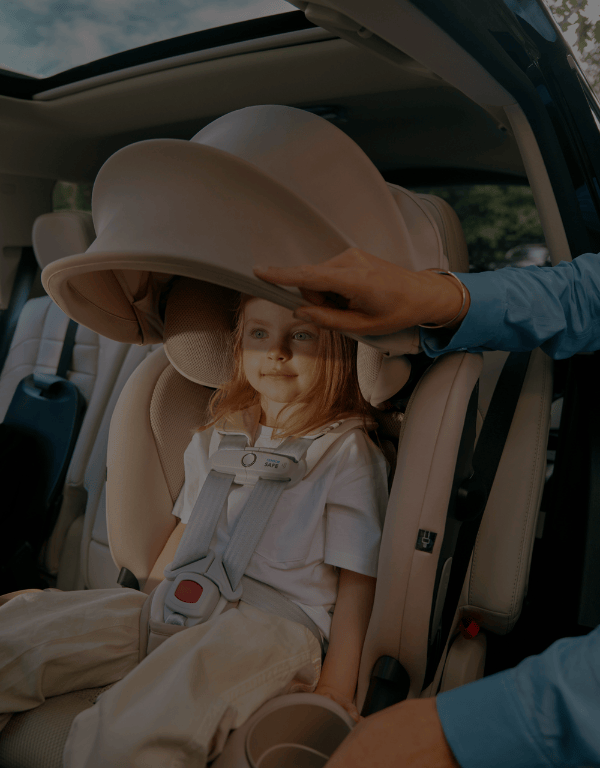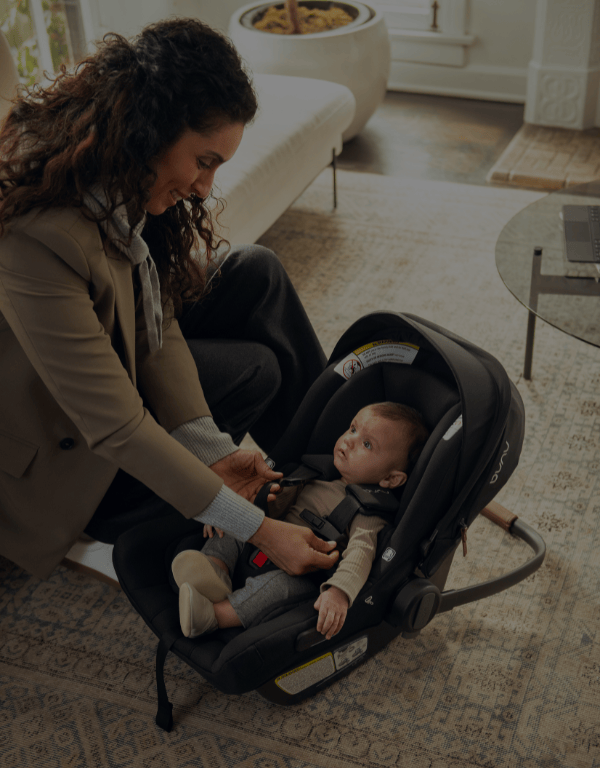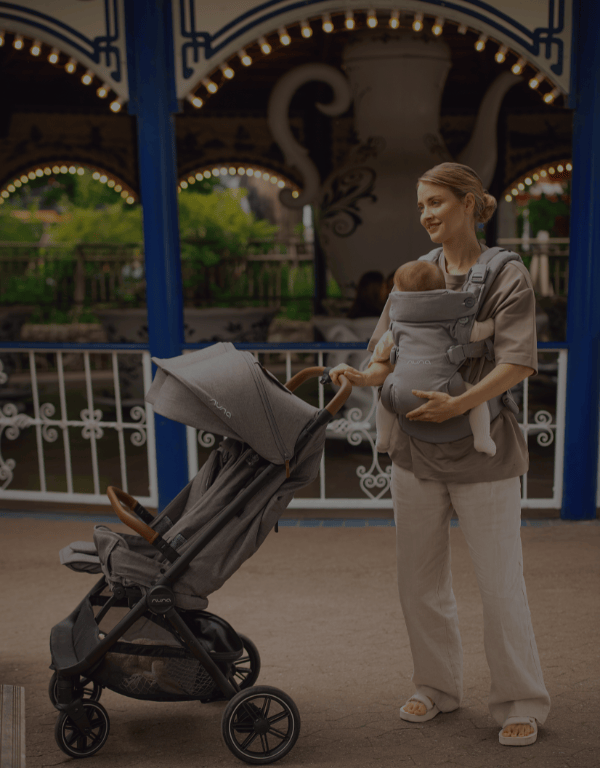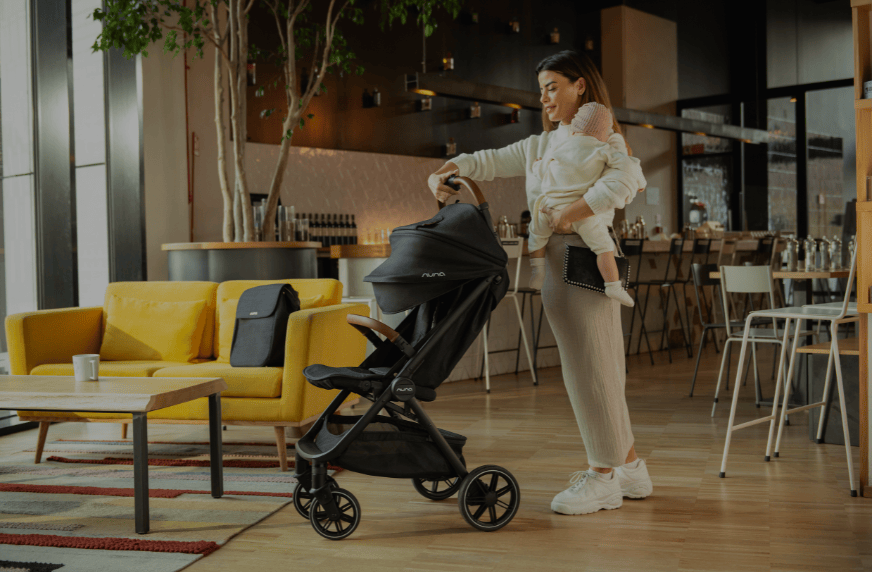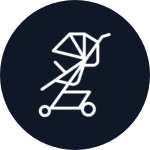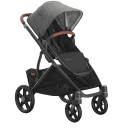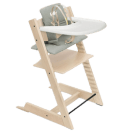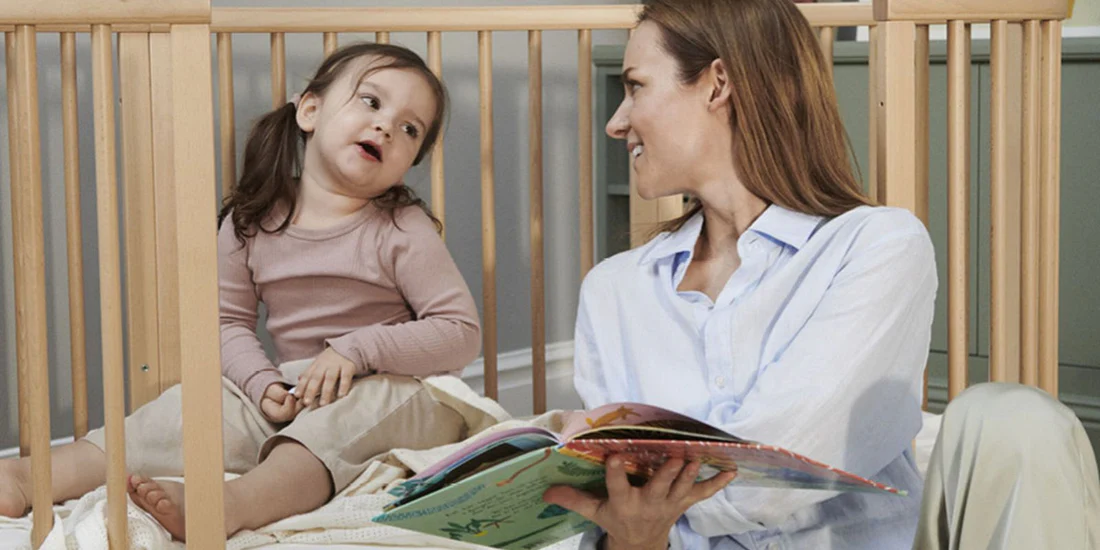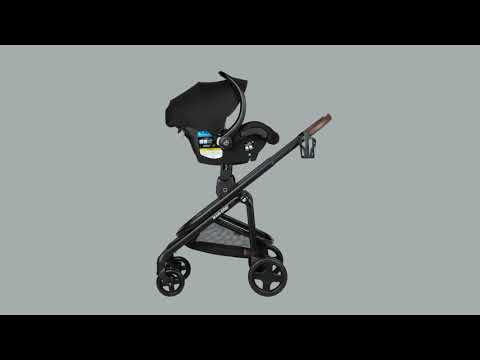
Our Guide to Baby’s First Bath
There are so many amazing firsts you’ll get to enjoy with baby—some will be no brainer fun (that was definitely a smile) and some get more fun with practice (ahem, bath time). The first bath with your baby can feel like a nerve-wracking task… Suds’ing up a wriggly newborn, while totally sleep deprived? Oof. Our guide to baby’s first bath will walk you through our best bathing tips and tricks, and eventually, bath time will be a time of bonding, calming, and eventually, learning and play. We promise.
Baby’s First Bath FAQs
When Should You Give Your Baby Their First Sponge Bath?
The World Health Organization (WHO) recommends delaying the baby’s first bath until at least 24 hours after birth to allow for important skin-to-skin contact with the mother, which can help regulate the baby’s body temperature, promote bonding, and provide valuable health benefits.
After this initial period of bonding, it is typically safe to give the baby a bath using warm water and a mild soap or baby wash. It is important to use gentle and non-irritating products, avoid scrubbing or rubbing the baby’s skin too hard, and keep the baby warm and comfortable throughout the bath.
When Should You Give Your Baby Their First Full Bath?
Once you get your little one home from the hospital, there’s no timetable for that first sponge bath, and no need to feel rushed. Until the umbilical stump is healed—generally about 2 weeks after birth—stick to sponge baths.
How Often Should You Bathe Your Baby?
Babies do not need a bath every day—in fact, bathing too frequently can dry out sensitive newborn skin and cause irritation (similarly, use bath gels and shampoo sparingly). As long as you make sure to keep those dirt-prone areas clean (diaper area, face and neck, hands, etc.), you will only need to bathe your baby two or three times a week. And don’t worry about shampooing during every bath, either (a real hair wash with shampoo can be done just weekly).
How Much Water Should You Use?
For those first newborn baths, a few inches of water should do the trick (just enough to dunk your washcloth and to keep baby warm). Once your baby can sit on her own—generally around the 7 to 9 month mark—you can fill to the belly button.
What Temperature Should the Water Be?
The ideal temperature for a baby’s bath water is around 100 degrees Fahrenheit (37 degrees Celsius). This temperature is warm enough to be comfortable for your baby, but not too hot to cause burns or discomfort.
It’s important to check the temperature of the water with a bath thermometer or by testing the water with your wrist or elbow before placing your baby in the bath. Make sure that the water feels warm, but not hot or cold, to the touch.
It’s also important to note that the temperature of the bath water can be affected by factors such as the temperature of the room, the length of time the water has been running, and the amount of water in the tub. Therefore, it’s a good idea to always check the temperature of the water before placing your baby in the bath.
If you are unsure about the temperature of the water or have any concerns about your baby’s safety during bath time, be sure to talk to your healthcare provider or a trusted expert for guidance. They can provide you with personalized advice based on your baby’s individual needs and health status.
If the idea of testing water on your wrist or elbow isn’t precise enough to calm your nerves, the Munchkin White Hot Ducky is the classic bath toy that also gauges temperature. The word HOT appears in white on the underside of the duck if the water is too warm for your baby.

What’s the Best Tub for Your Baby?
There are two types of baby bathtubs: sink inserts and standalone tubs.
Sink inserts are simply padded or foam inserts that lay in your sink, creating a cozy spot to wash your infant.
- Sink inserts have a shorter lifespan, and are usually outgrown once your baby is 4-6 months old.
- They’re flexible and able to mold to fit most sink basins, whether in the kitchen or bathroom (measure your sink first to make sure the tub you’re eyeing will fit).
- Sink inserts allow you to bathe baby while standing, which is a great option for moms who have had a c-section, grandparents, or caregivers with back or knee issues.
- Most sink inserts are space-saving and can be hung on the back of a door.
Standalone bathtubs are basins that can be used in the tub (or on the countertop if your back needs a break).
- Most basin bathtubs have options (like a bum bump or infant insert) for bathing your newborn.
- Some collapse or fold flat for storage.
- Depending on the tub, standalone basins can be used in sinks, in tubs, or on countertops and tables.
- Most can be used until your baby’s second birthday, and some even longer.
- Once a standalone tub is outgrown—or even before!—they can be used as sensory bins or outdoors for water play.
When Should You Move Your Munchkin from a Baby Tub to a Regular One?
The timing for when to move your baby from a baby tub to a regular one will vary depending on the size and development of your baby, as well as your own comfort level. Here are some factors to consider when deciding when to make the transition:
- Size and weight: Most baby tubs are designed for babies up to six months old or around 20 pounds. If your baby is approaching these limits and is too big for the tub, it may be time to transition to a regular tub.
- Sitting up: Once your baby is able to sit up on their own, they may be ready to use a regular tub. This will allow them to sit comfortably and explore their surroundings while being bathed.
- Safety concerns: If you are having difficulty using the baby tub or feel that it is not providing enough support for your baby, it may be time to switch to a regular tub. Make sure that you have a non-slip mat or other safety measures in place to prevent your baby from slipping or falling in the tub.
- Personal preference: Ultimately, the decision to move your baby from a baby tub to a regular one will depend on your own comfort level and preferences. Some parents may prefer to continue using the baby tub until their baby outgrows it, while others may prefer to make the switch earlier.
In general, most babies will be ready to transition to a regular tub around six months of age, when they have better head and neck control and are able to sit up on their own. However, it is important to monitor your baby’s development and take cues from them to determine the best timing for the transition.
Regardless of when you make the transition, it is important to continue taking safety precautions during bath time, such as using non-slip mats and always supervising your baby. And if you have any questions or concerns about bath time safety or your baby’s development, be sure to talk to your healthcare provider for guidance.
Basic Bath Time Tips
Ready to splish splash? Our tips for getting started:
- Establish a routine: A bath time routine will help set up your baby’s natural clock and reinforce that it’s ‘sleepy time.’ Dim the lights and get your little one ready for Snoozetown.
- Get your bath supplies together: Have everything you’ll use during bath time organized and within arm’s reach. The essentials include baby shampoo and body wash (or a product that does both), a couple of baby washcloths (they’re smaller and easier to use), a plus towel or two, baby lotion, and a baby bath tub. It’s also super convenient to have a diaper, diaper ointment, and a fresh outfit ready for after the bath.
- Basic bath time safety: Babies under two months old can’t regulate their body temperature and lose heat very quickly. Make sure you’re bathing your baby in a warm room, and that the water temperature is lukewarm (test with your elbow or wrist – they’re more sensitive than your fingertips). On the flipside, make sure to set your water heater below 120 degrees to prevent scalding. Fill your tub or sink with just enough water to cover the bottom of your baby’s body, and always keep one hand on that squirmy tummy.
How to Give a Newborn a Sponge Bath
Giving a newborn a sponge bath can be a gentle and effective way to clean their delicate skin while minimizing the risk of slipping or injury. Here are some steps to follow when giving a newborn a sponge bath:
- Gather your supplies: You will need a clean washcloth or sponge, a bowl of warm water, a clean towel, a diaper, and a change of clothes.
- Choose a warm, quiet, and well-lit area: Select a space that is free from drafts and provides a soft surface for your baby to lie on, such as a changing table or a bed with a towel or blanket spread over it. It might help to turn the heat up two degrees to ensure that your baby is cozy and warm during the bath.
- Undress your baby: Remove your baby’s clothes and diaper, leaving them covered with a clean towel or blanket to keep them warm.
- Wet the washcloth or sponge: Dip the washcloth or sponge in the bowl of warm water and wring it out thoroughly.
- Begin the sponge bath: Starting with the face, gently wipe your baby’s skin with the damp cloth or sponge, being careful around the eyes, nose, and mouth. Then move on to the rest of the body, paying special attention to the folds of skin and diaper area.
- Dry your baby: Use a clean, dry towel to pat your baby’s skin dry, being gentle around the face and other sensitive areas.
- Dress your baby: Once your baby is dry, put on a clean diaper and dress them in a fresh set of clothes.
It is important to keep your baby warm and comfortable throughout the sponge bath, and to avoid getting water in their ears or nose. You should also take care not to apply too much pressure or rub the skin too hard, as newborns have delicate and sensitive skin. If you have any questions or concerns about giving your baby a sponge bath, it is best to consult with your healthcare provider for guidance.
We love the Hooded Towel and Washcloth set from Little Unicorn for newborns—the washcloth is super soft, and the towel has a cozy hood to keep your baby extra warm.

Little Unicorn Hooded Towel & Washcloth Set
How to Give a Newborn a Tub Bath
Once your baby’s umbilical cord stump has fallen off, you can transition from sponge baths to baths in an infant tub. You can begin incorporating mild soaps and tear free shampoos (again, you won’t need to use much).
- Fill the tub with a few inches of warm water.
- Gently lower your baby into the bathtub, supporting her head and neck with your arm.
- Begin with washing the face, and make sure to pay attention to those chubby rolls that tend to develop around the neck, arms, and legs.
- Make sure to be gentle in the genital area, and for girls, make sure to clean front to back and do not use any kind of cleanser to avoid irritation.
- After patting dry, make sure to use a thick hypoallergenic lotion to moisturize. A 2014 study in the Journal of Allergy and Clinical Immunology demonstrated that daily application of a moisturizing lotion in the first 32 weeks of life reduced the risk of eczema by almost a third.
It is important to never leave your baby unattended during a tub bath. If you need to step away for any reason, take your baby with you or ask someone else to watch them. You should also avoid using bath oils, bubble bath, or other additives, as they can irritate your baby’s skin or cause infections.
Additionally, it is recommended to give your baby a tub bath 2-3 times a week, or as needed to keep them clean. You can also clean your baby’s face, neck, and diaper area daily with a damp washcloth.
Finding What’s Right for You
Albee Baby is the oldest family-owned specialty baby shop in the US, and we pride ourselves on providing our customers with the best assortment of baby products anywhere, at fair prices, always. We’re committed to being an inclusive resource for parents, and hope you’re feeling empowered to find the right baby gear for your family. Still have questions? Feel free to contact our baby gear experts at 877.692.5233 or by email at info@albeebaby.com.
 Car Seats
Car Seats
 Strollers
Strollers
 Travel Cribs & Playards
Travel Cribs & Playards
 High Chairs
High Chairs
 Cribs & Nursery
Cribs & Nursery
 Health & Safety
Health & Safety
 Gift Shop
Gift Shop
